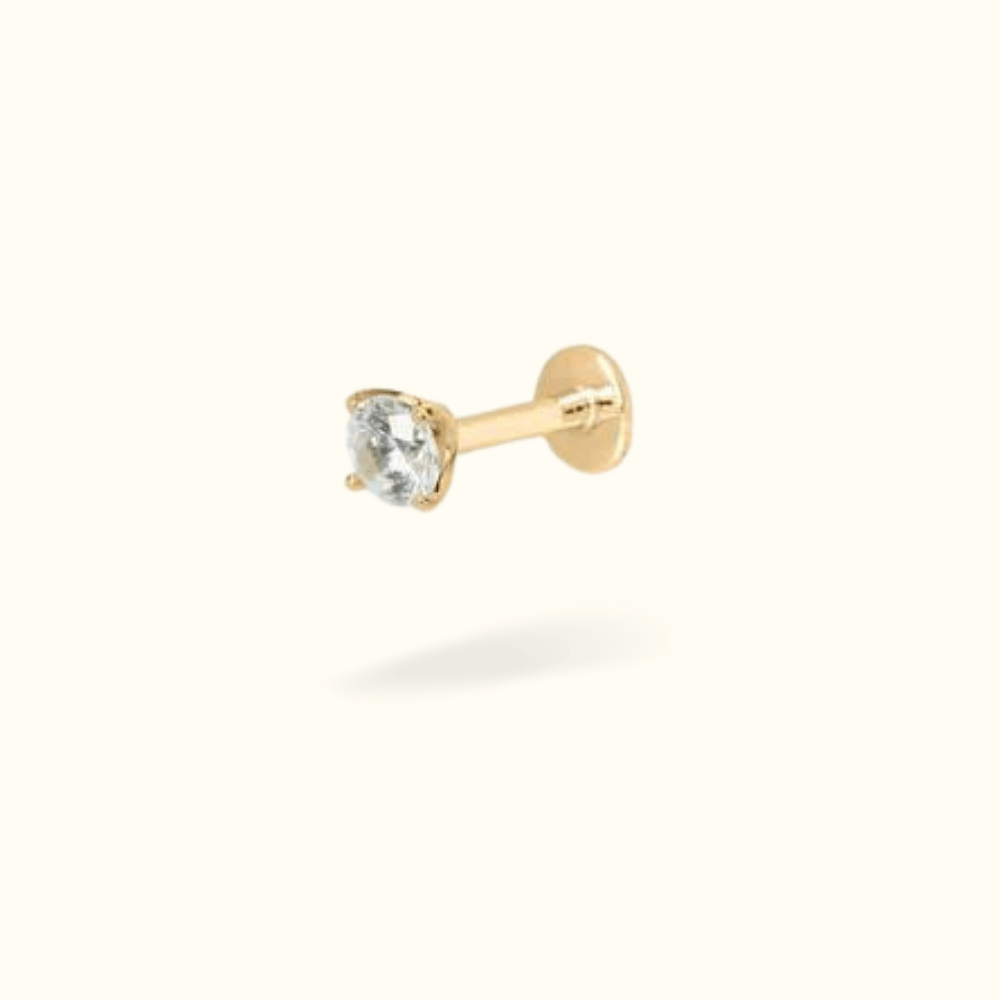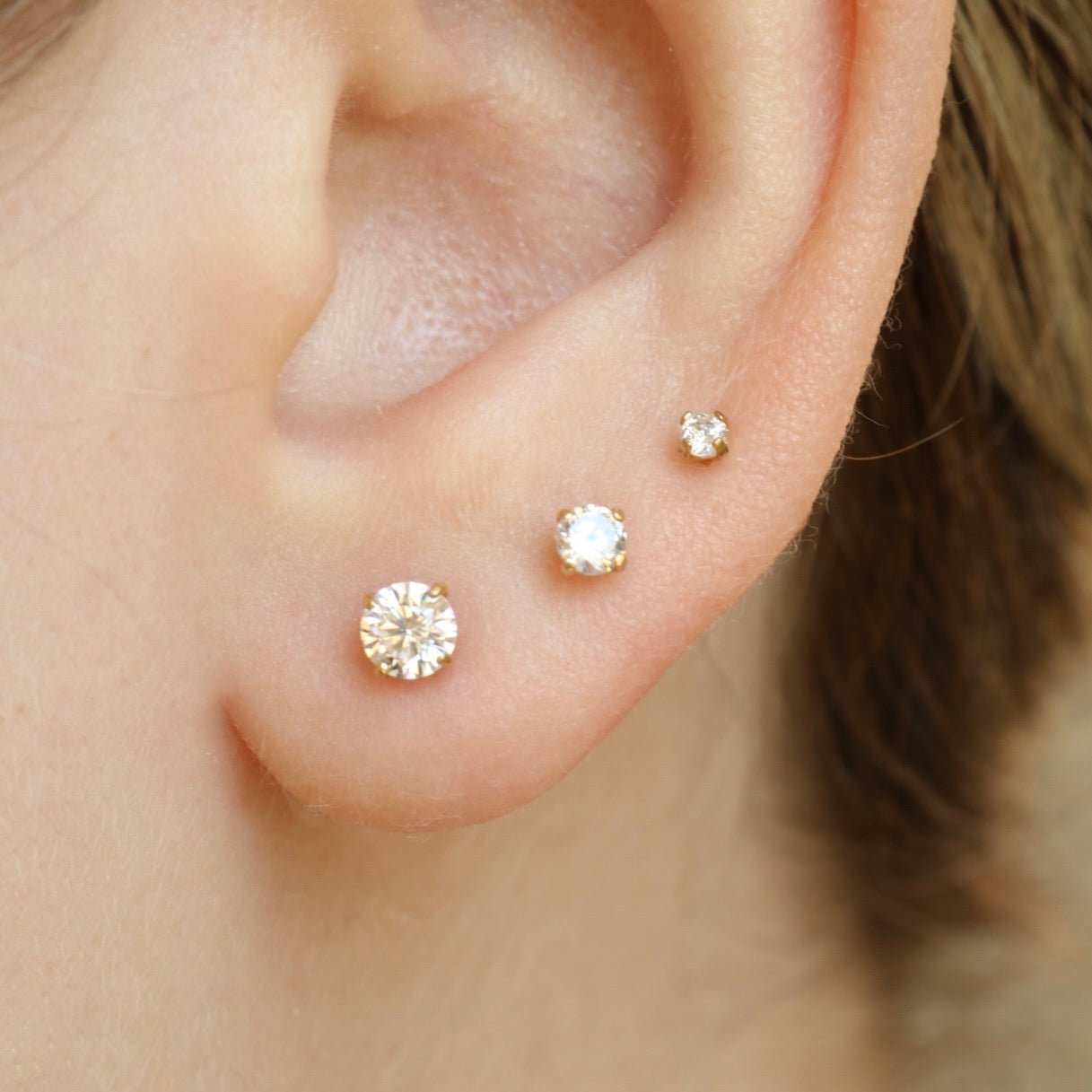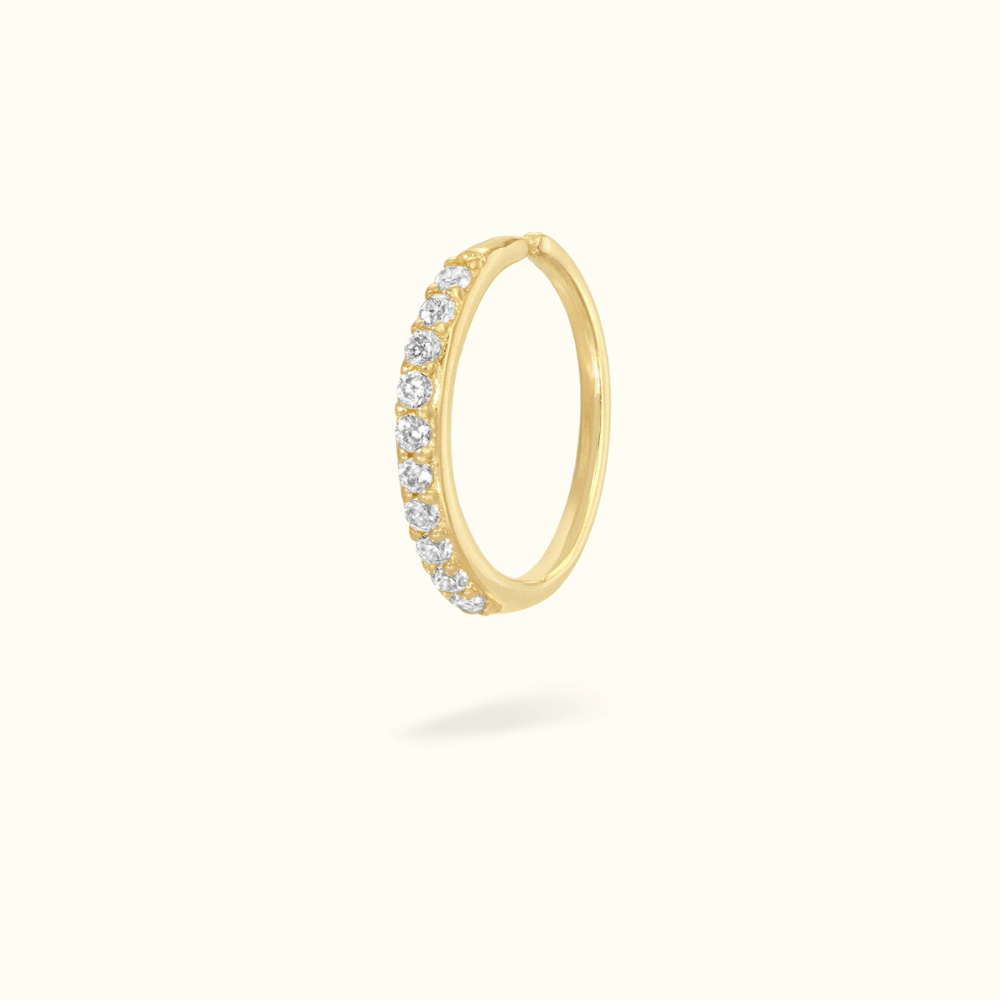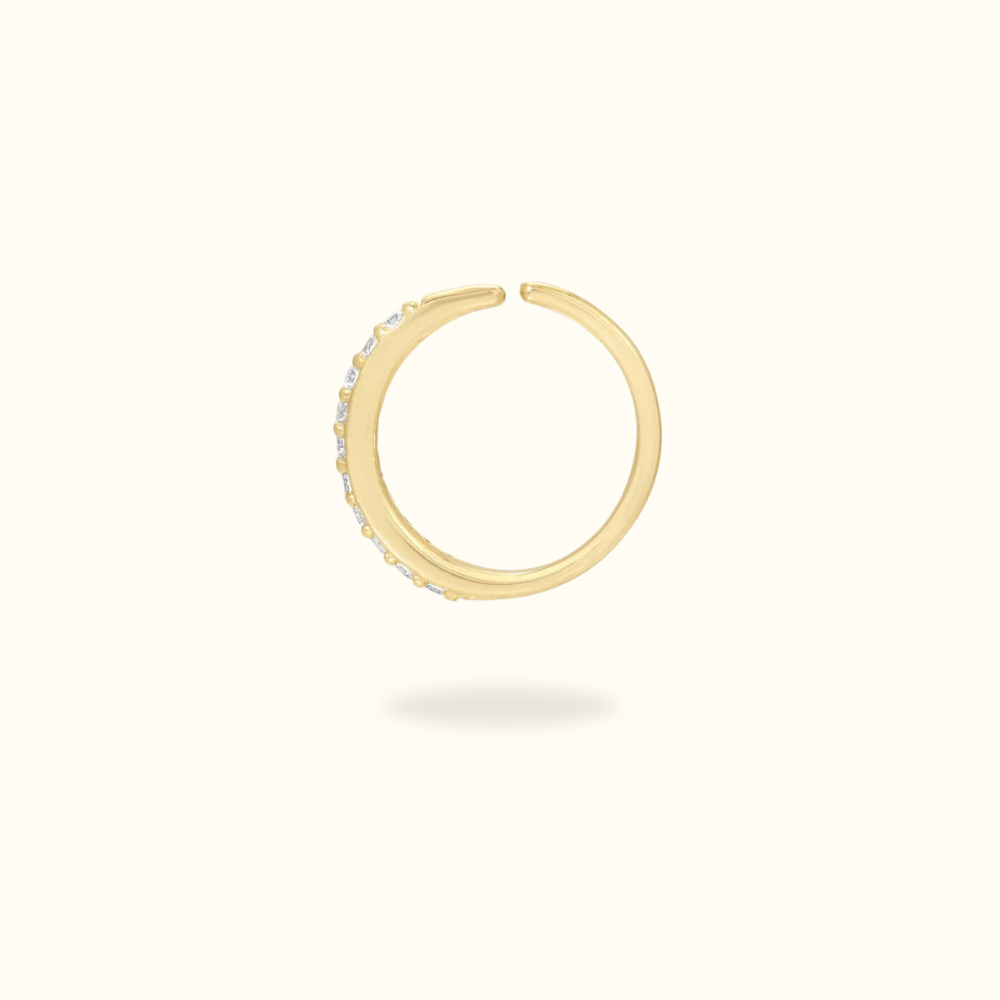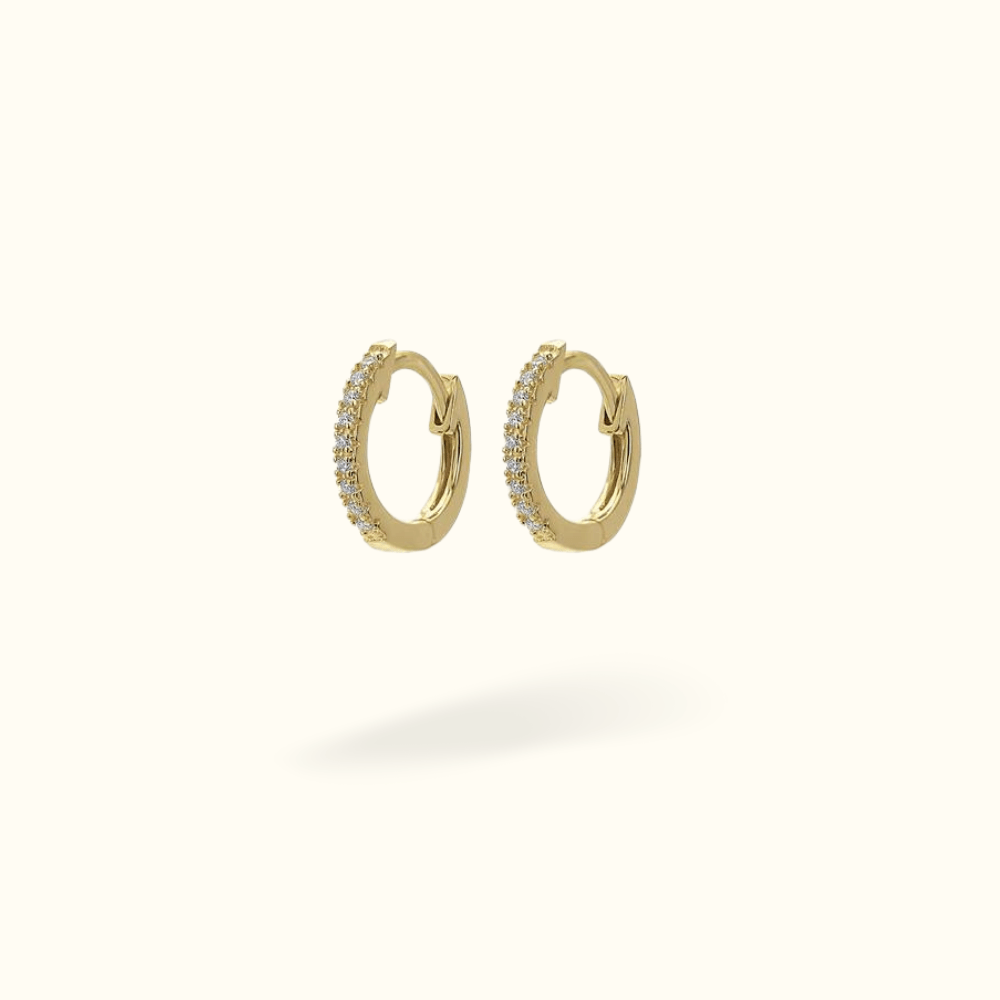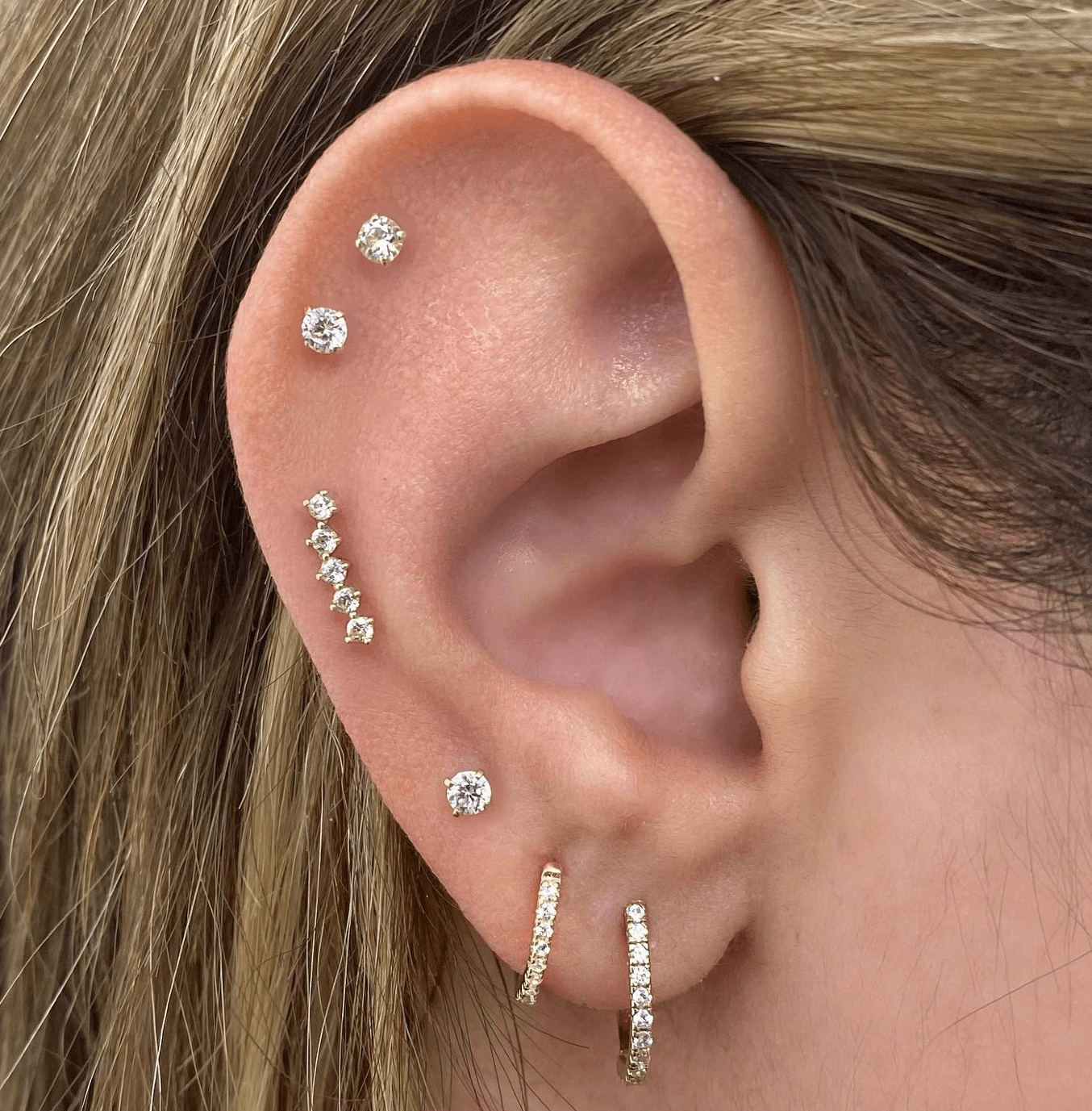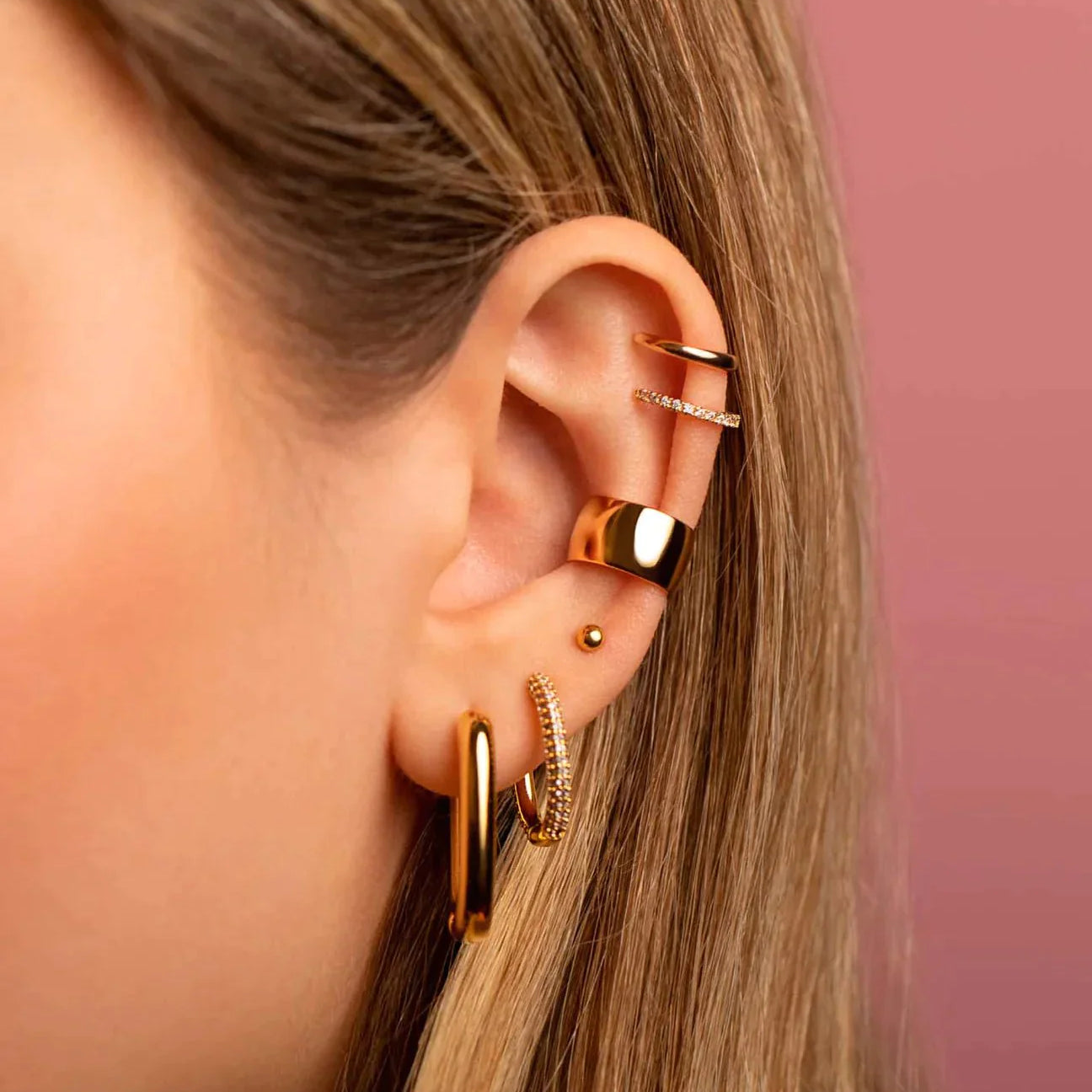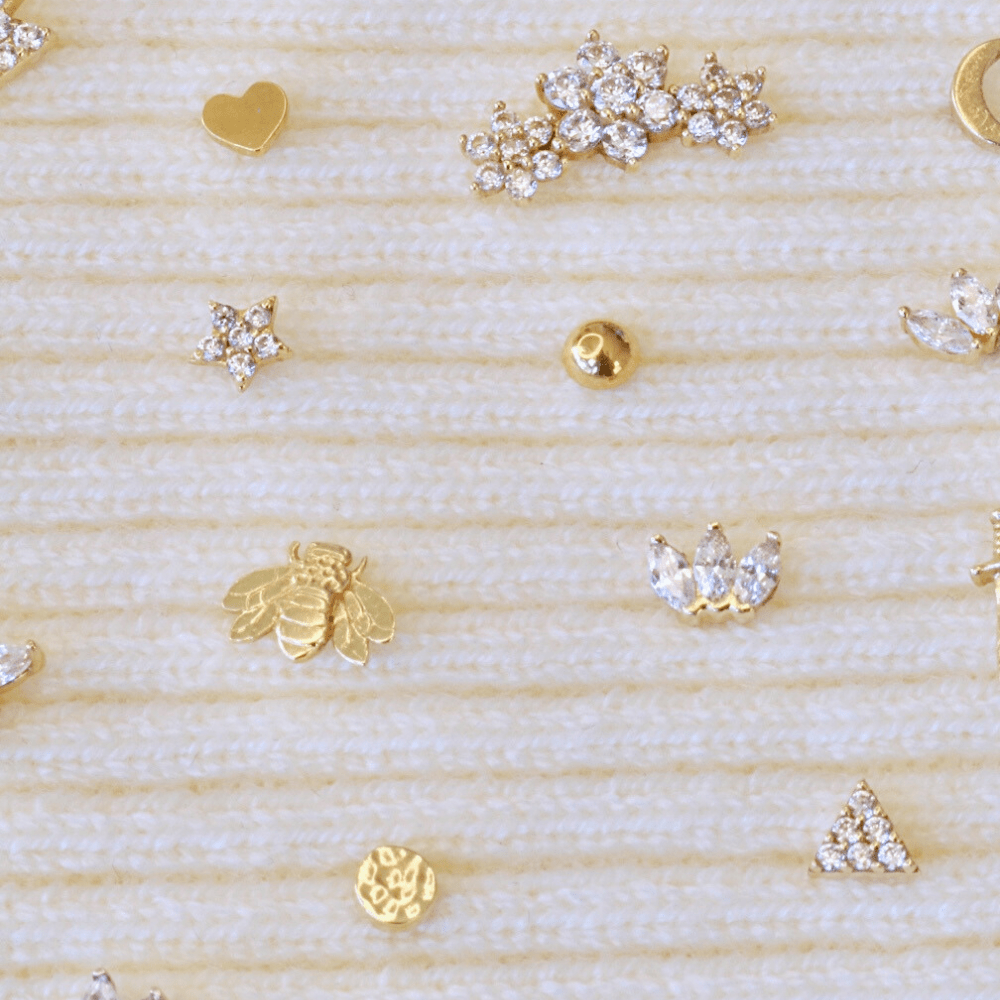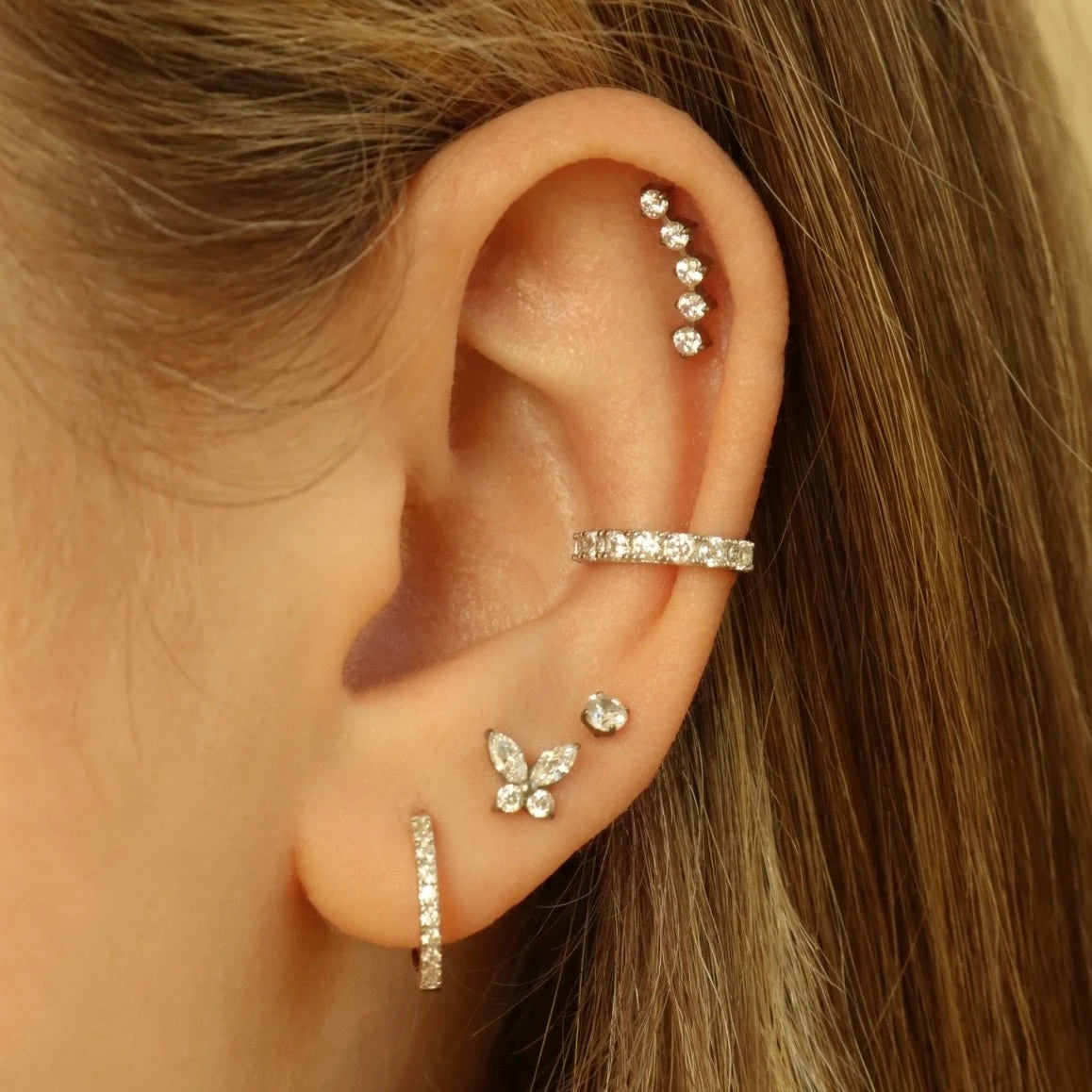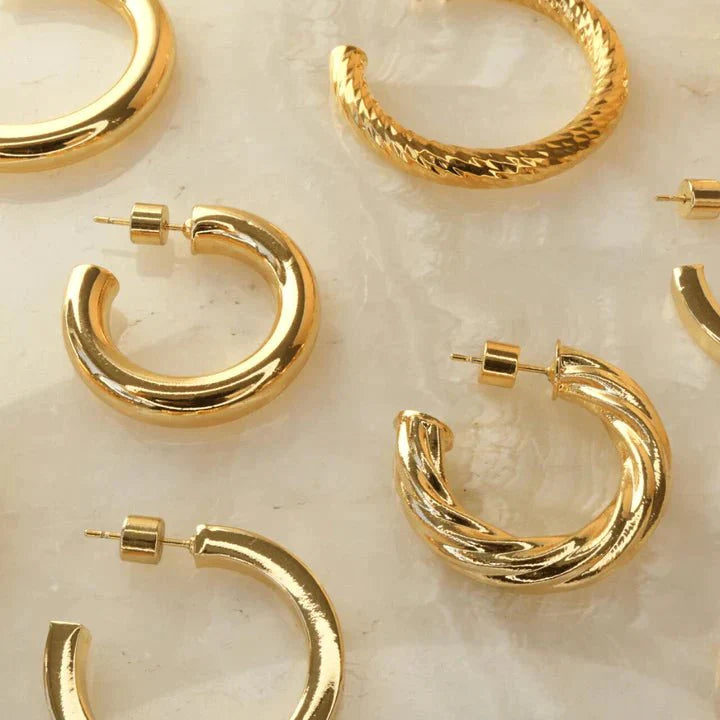Jewelry Guide
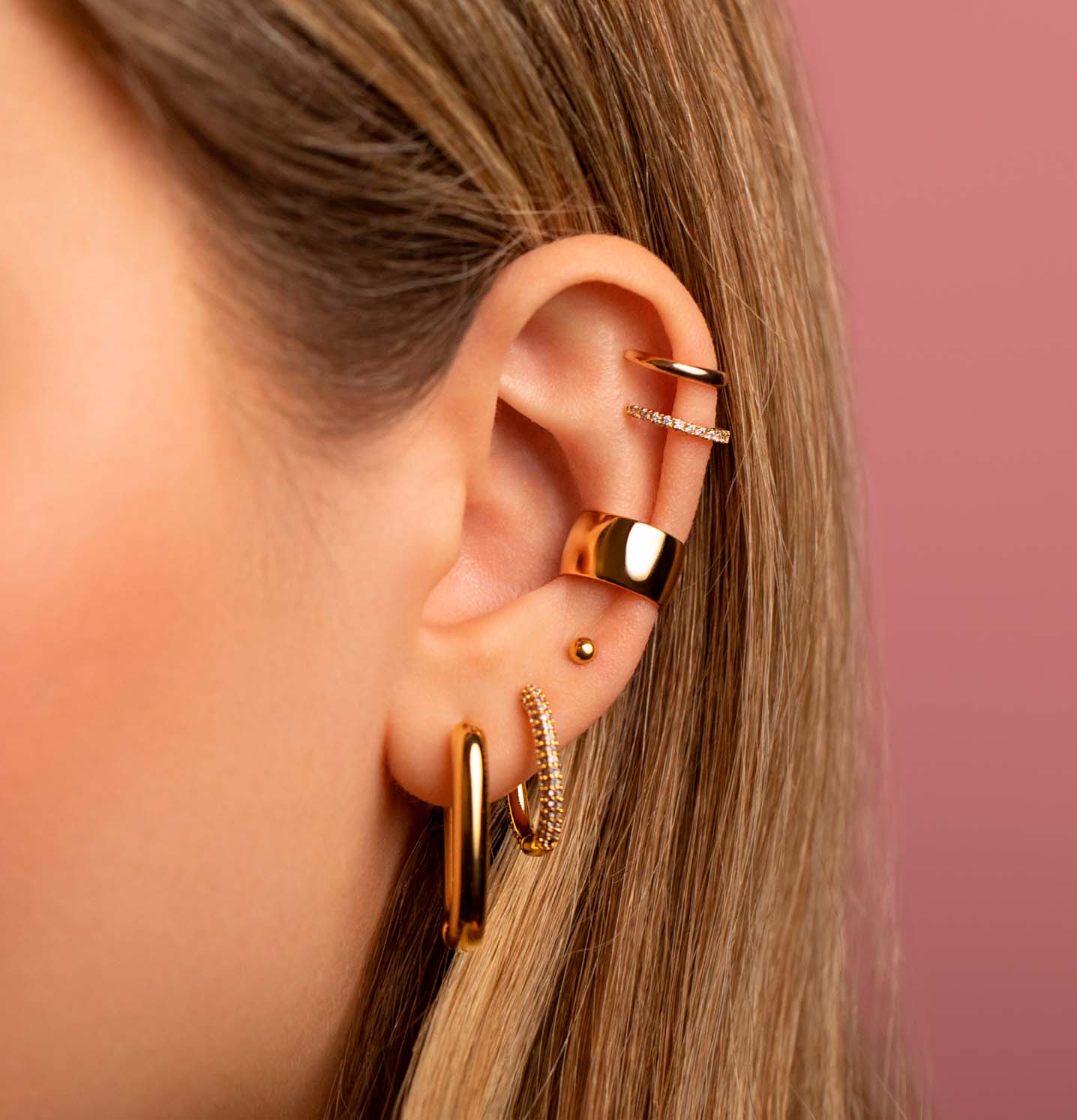
OUR METALS
SOLID GOLD
Our gold jewelry comes in both yellow and white gold designs. When it comes to precious metals, gold is the least reactive metal that will not oxidize or discolor. Our 14k gold selections are perfect for everyday wear. Gold in its purest form 24k, is too soft to work with, while grades under 14k could result in migration, rejection, or develop permanent reactions to gold. Additionally, solid gold is appropriate for initial piercings if it’s nickel-free and between 14k or 18k in grade.
Care
To clean your gold jewelry, scrub lightly with a soft-bristled brush, warm water and antibacterial soap. Cleaning with alcohol or harsh chemicals is not recommended. Overtime gold can lose its luster. To preserve the brilliance of your gold jewelry, buff the metal gently with a clean cloth and always store your pieces in a safe, dry environment.
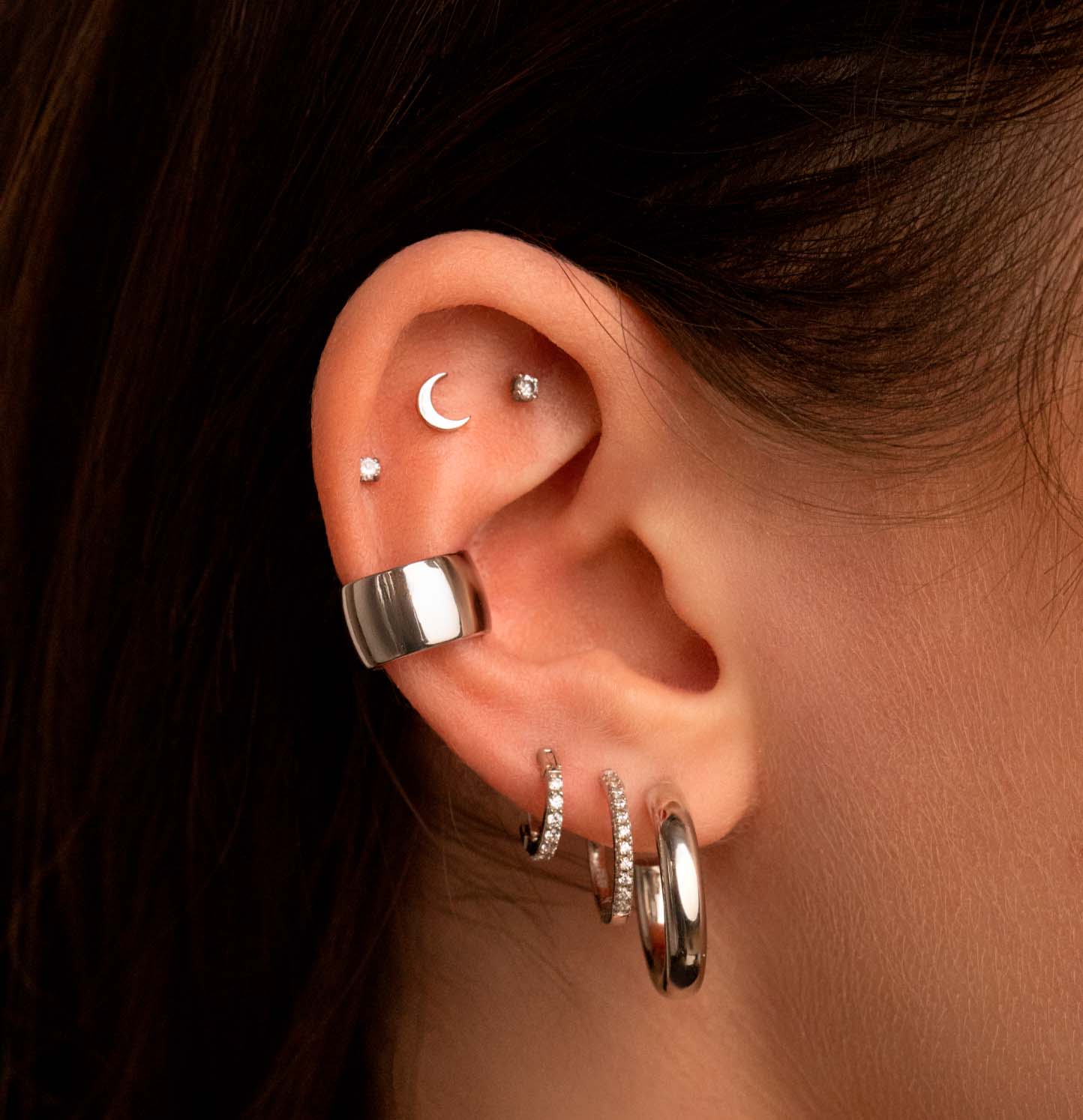
OUR METALS
STERLING SILVER
Our sterling silver jewelry comes in both 18k gold plating and 18k white gold plating. We do not recommend wearing our sterling silver fashion jewelry on fresh or unhealed piercings. Due to the thick gold plating on our sterling silver pieces, you can wear our fashion jewelry for longer periods of time without the worry of the tarnish or color change. We do recommend removing your earrings daily and washing them with soap and water to improve longevity.
Care
Remove your jewelry before exercising, washing your hands or showering. Always apply perfumes, creams and hair care products before wearing. To clean your fashion jewelry, polish gently with a specialty silver cloth and always store in a safe and dry environment.
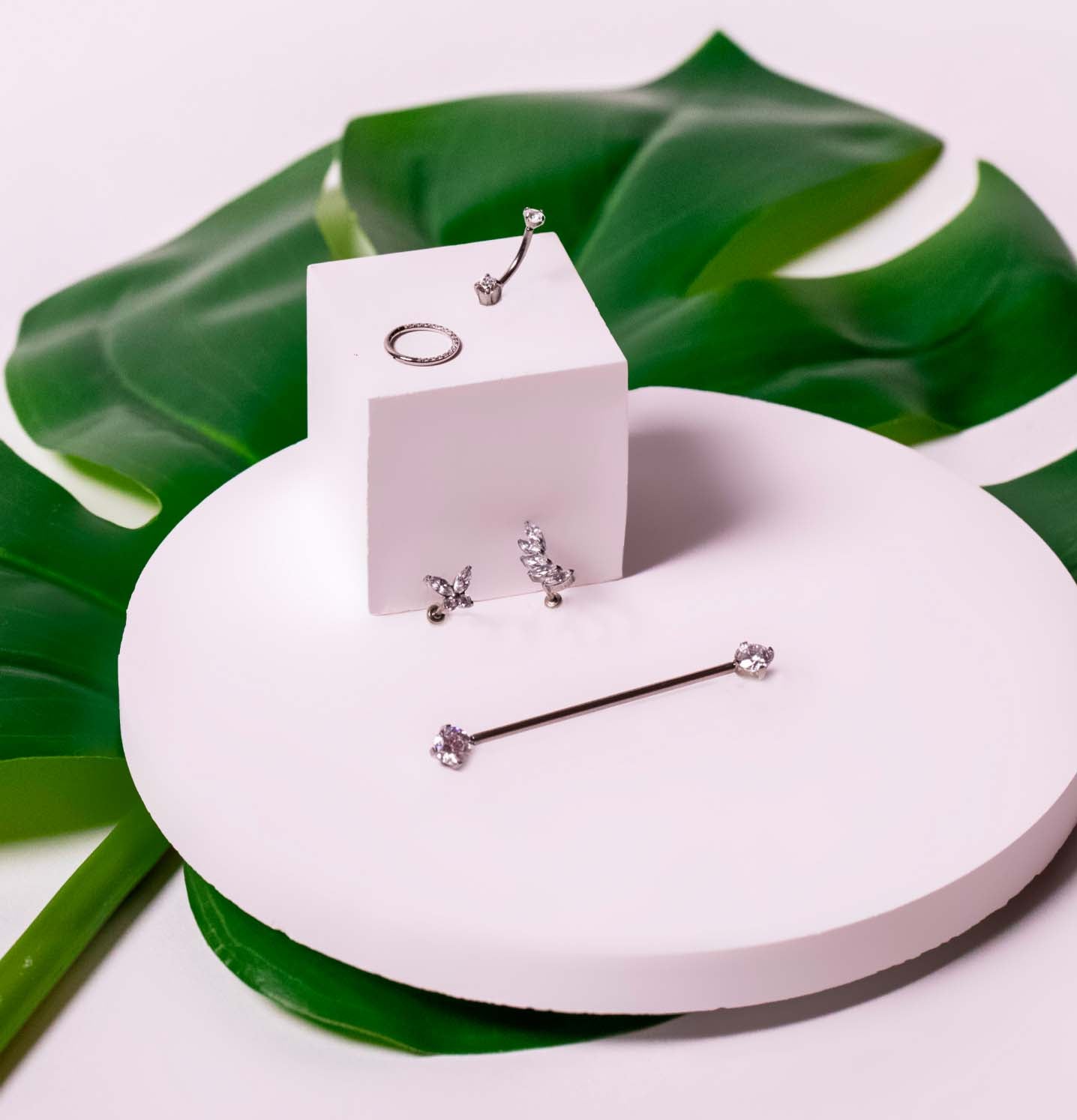
OUR METALS
TITANIUM
Our Titanium ASTM F-136 jewelry provides a popular alternative to stainless steel for body options. Expert piercers prefer using titanium for initial piercings as the innate properties of titanium cause less complications and rejections during the healing process. Titanium is a lightweight and hypoallergenic metal, and its para magnetism makes it safe to wear during medical procedures like MRIs. Like steel, titanium comes in different grades, with Grade 23 (6AL4V ELI F-136) implant grade being the highest. We work with titanium grade ASTM F-136. This metal is excellent for people with sensitive skin as it does not contain nickel, and it weighs almost 50% less than steel.
Care
To clean your titanium jewelry, scrub lightly with a soft-bristled brush, warm water and antibacterial soap. Cleaning with alcohol or harsh chemicals is not recommended. Anodized titanium may fade over time due to body chemistry or when worn in friction-prone areas, but this is not harmful to the wearer.
JEWELRY SIZING
DISCLAIMER
Prior to purchasing, we highly recommend visiting a local studio to get measured for your proper size. There are two main systems of measuring body jewelry sizes:
01 Gauge (“g”)
20g / 18g / 16g / 14g
02 Millimeter (“mm")
0.8 m / 1.0 mm / 1.2 mm / 1.4 mm
In the United States, the gauge system is much more common than millimeter measurements. Here’s a piercing size comparison chart with examples.
NOSTRIL 20g (0.8mm) or 18g (1.0mm)
HELIX 18g (1.0mm) or 16g (1.2mm)
SEPTUM 16g (1.2mm)
EAR LOBES 20g (0.8mm) or 18g (1.0mm)
CONCH 18g (1.0mm) or 16g (1.2mm)
INDUSTRIAL 14g (1.6mm)
TRAGUS 18g (1.0mm) or 16g (1.2mm)
FORWARD HELIX 18g (1.0mm) or 16g (1.2mm)
NIPPLES 14g (1.6mm)
ROOK 16g (1.2mm)
FLAT 18g (1.0mm) or 16g (1.2mm)
DAITH 16g (1.2mm)
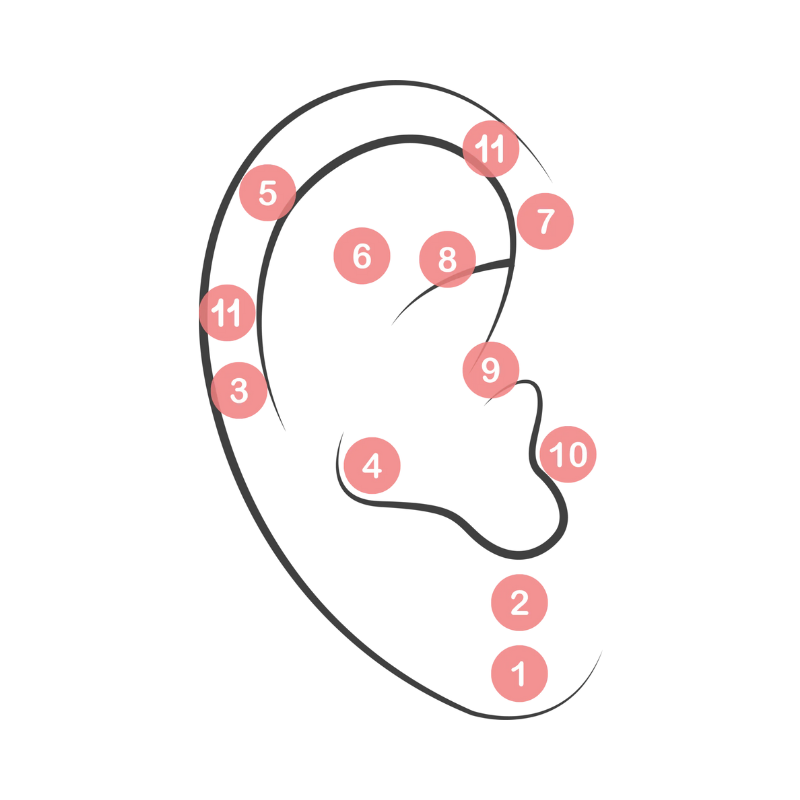
Pick Your
PIERCING
We take a personalized approach to our ear piercing process– mapping your unique ear anatomy and curating specialty styles made just for you. Each person and piercing placement heals at a different rate, and we’re here to provide the smoothest piercing and healing experience to our clients.
- Lobes
- Stacked Lobe
- Mid-Helix
- Conch
- Helix
- Flat
- Forward Helix
- Rook
- Daith
- Tragus
- Industrial
